Pete’s Gear: ARP 2500 and 2600 synthesizers
Draft ARP synthesizer page. If you’ve got additions, please get in touch.
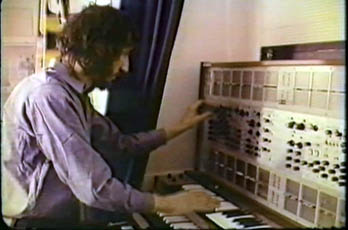
ARP 2500 synthesizer
Introduction
For 1971’s Lifehouse project, Pete Townshend began his groundbreaking experimentation with synthesizers. He began with feeding a Lowery organ through an EMS VCS3 synthesizer for Won’t Get Fooled Again.
And also on the resulting Who’s Next LP, he began using ARP synthesizers, for which he’s most famous, to add to both the backing and soundscape of Bargain, The Song Is Over, the Relay, Love Ain’t For Keeping (electric version), Going Mobile among others.
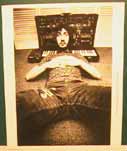
Click to view larger version “Pete Townshend with his ARP 2600 Synthesizer” — ARP 2600 synthesizer ad, ca. 1972. Courtesy Ed Intagliata at Cassell’s Music, San Fernando, Calif. cassellsmusic.com.
John Atkins, from the Who’s Next reissue liner notes:
Perhaps unexpectedly for such a huge selling album, Who’s Next has an experimental and revolutionary edge in its use of synthesizers. The VCS3 and ARP synthesizers programmed by Pete weren’t used merely to add superficial gloss to the production but were utilised as a fundamental structure of The Who’s sound. At a time when the synthesizer was still very much a melodic novelty item, Townshend pioneered a cyclic synthesizer rhythm track upon which songs such as ‘Baba O’Riley’ were based. In 1971 this was a radical, indeed, unprecedented breakthrough, with only Stevie Wonder working along the same lines (even so, Wonder’s synthesizer experiments only appeared a year later, 1972). Pre-programmed synthesizers and sequencing are commonplace in pop and dance music nowadays, but Who’s Next, it should be remembered, is where they first appeared on record.
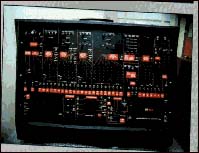
As a matter of course, most all synthesizer tracks were recorded at Pete’s home studio and brought to the Who’s sessions as finished products.
Selected tracks
Going Mobile
Guitar into ARP 2500 synth envelope follower.
Pete (December 1971 Crawdaddy interview with John Swenson, “The Who Puts the Bomp”):
It’s become the instrument which is almost like a voice, there are different sort of sounds that are made from different ways of playing and it’s like . . . you can recognize guitarists.
So there’s always that bit of humanness, if you like, but it’s only a breaking off point because a guitar is not that much just a guitar, but once it becomes electrified it’s turned into a giant instrument which can play to 60,000 people. It can also do a lot of other things, a guitar can be the control center for a synthesizer. A guitar can go into a synthesizer and have its sound taken apart and put back together again in a different form, so that you’re playing the guitar, but the actual sound that comin’ out is a completely different thing. On the album, on Who’s Next, there’s a very simple one which we use with the ARP synthesizer called an envelope follower, where you plug the guitar in and you get a sort of fuzzy wah-wah sound.
- That’s on Going Mobile. So that’s how you get that incredible sound.
But the guitar itself was controlling the amount of filter sweep. When you hit the note the filter went Bwaaumm! And when the string stopped the filter closed so you got nothing.
Bargain
Pete (Scoop liner notes):
At this time I was still coming to grips with the incredibly rich harmonics that my ARP 2500 synthesizer produced, even with a single voice and here one part seemed enough. … There were good songs, and good ideas, but Glyn Johns our producer stuck his neck out to enhance and evolve not just the songs, but also the sounds I had produced at home.
The Relay
From Rich Rowley:
Pete’s guitar is being processed through an ARP 2600 synth. The guitar output is fed into the audio input of the voltage-controlled filter (VCF) section of the synth. Using the sample-and-hold function, the output is connected to the VCF, which automatically turns the frequency (tone) of the filter to different, random positions in a rhythmic style.
Join Together
From Rich Rowley:
ARP 2500 or ARP 2600, 1968 Lowrey Berkshire Deluxe TBO-1 organ. The Jew’s harp on the intro is an ARP synth. It sounds like a four- or eight-bar loop that Pete built the rest of the song on. The organ part that comes in two bars before the vocals is interesting as it’s the same setting as Baba O’Riley, only set to a much slower speed. The organ is also fed through a low-pass filter, which can be heard on the demo.
New Song
APR Omni
Quadrophenia
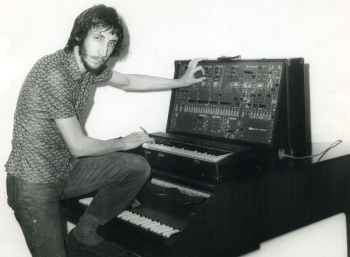
Click to view larger version. ARP 2600 synthesizer
Pete’s use of synthesizers is heavily employed as orchestration on 1973’s Quadrophenia.
The string sounds on Quadrophenia, according to Pete:
For Quadrophenia, and the string sounds for the Tommy movie soundtrack that I did straight afterwards, I used a combination of real violin (that I played myself, sometimes set up to open tunings to suit the track) and sounds from a combination of subtractive synth “chains” I set up on my ARP 2500 studio synthesizer. I was able to produce between six to eight of these “chains” at once, each one a single violin emulation. I used keyboard to state the note, but I produced the output by “bowing” one side of a ring modulator using a potentiometer with a knitting needle stuck into the shaft — the other side of the ring-mod of course had the combined six violin sounds passing through it. I probably took down four tracks of that, giving me a section of 24 to 32 “violins”. The real violin simply added “rosin”. I used that trick on a track on the latest Who album Endless Wire — listen to “Two Thousand Years” and you can hear Vienna strings combined with violin, viol and basic cello that I mixed in to create the “rosin”. It sounds hokey, but it’s really fun to do.
One trick I used during the Who Are You album (the demo of Love Is Coming Down), based on the same thinking, was to modulate a polyphonic ARP string machine using the sound of a real violin through a vocoder. The sound of the real violin was the ‘voice’ that modulated the string pad. It sounded awful, until you combined it with a pad of untreated synthesized strings — then it seemed to add splashes of harmonics and colour to the synth pad that made it sound, if not exactly real, more like a human sound than a synthetic one.
On stage with the Who you might see me scraping across my strings near the bridge with my guitar pick. The plastic kind I use start to smear when they get hot from the friction, and the effect is like polyphonic bowing. The harmonics created by this kind of trick (and Jimmy Page used it of course) are very different to the harmonics created by distortion.
Who Are You
Who Are You synth.
From Rich Rowley:
An overdriven ARP 2500 or ARP 2600 synth. The overdriven guitar is fed into a voltage-controlled filter (VCF), which is being controlled by a low-frequency oscillator (LFO) triangle wave. The LFO is set to the tempo of the song at eight pulses per bar, making the tone of the VCF rapidly rise and fall in time with the song. The next step is to make each pulse from the LFO to trigger sound alternately from the left and right sides of the stereo picture.
Pete:
“I still had the full-size barn studio that I built for mixing Quadrophenia and, while working on the demo for this track, nearly blew my own brains out developing the backing track for the song. The weird background guitar sound on this was created with a top-secret ARP 2600 patch I invented, but the sawing guitar sound at its heart was generated with an ‘E-Bow.’”
Photos
Studio, Twickenham, ca. 1999
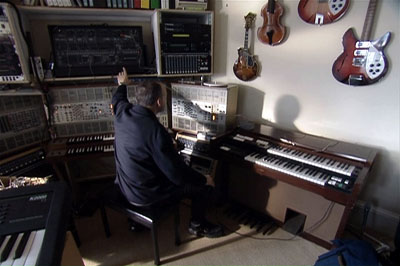
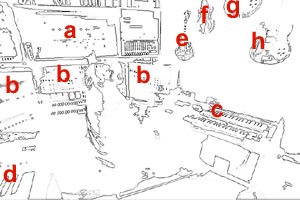
- ARP 2600 synthesizer
- ARP 2500 synthesizer
See Home Studio Instruments for further info.
Additional appearances
Sponsorship (1970s)
Pete appeared in ARP ads as early as 1972.
ARP ad ca. 1975
Pete’s ARP Opera.
You know Pete Townshend. He and his ARP synthesizers produce some of the most incredibly creative music of our time. As a matter of fact, Pete used his ARP’s throughout the soundtrack of the new “Tommy” film.
His creations say plenty. About life. And about his choice of musical instruments. His ARP synthesizers help him express himself exactly the way he wants to. His ARP 2600, for instance, has a patch cord and slider system which makes it a natural for live performance or studio work. You’ll find one in just about every leading rock band in the country.
Who wrote the first ARP opera? None other than Pete Townshend. There are seven different ARP models to suit every musical need and budget, from $995 (suggested list). Now, isn’t it time you discovered all about ARP … the number one hitmaker.
ARP Instruments, Inc. 320 Needham Street, Newton, MA 02164.

Click to view larger version “Pete Townshend with his ARP 2600 Synthesizer” — ARP 2600 synthesizer ad, ca. 1972. Courtesy Ed Intagliata at Cassell’s Music, San Fernando, Calif. cassellsmusic.com.
Resources and Information
- Rich Rowley: The Who Backing Tracks
- Synth Museum: ARP Instruments
- ARP 2500: synthmuseum.com/arp/arp250001.htm
- ARP 2600: synthmuseum.com/arp/arp260001.html

